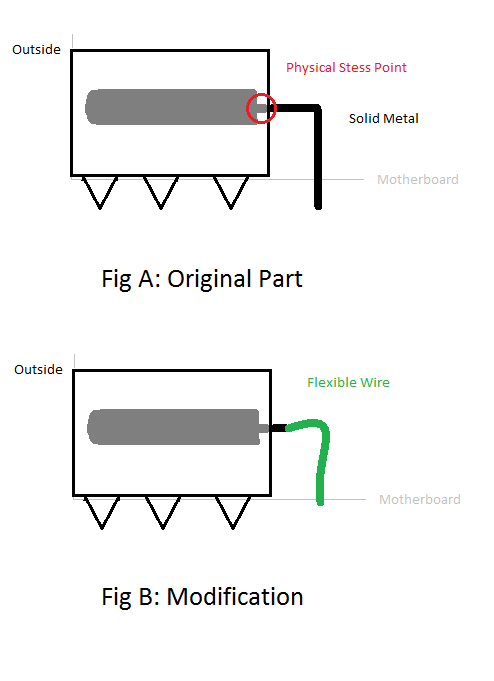04 Mar 2011
Overcoming a vulnerable power jack design in a laptop
For the third time in three years, my Gateway MX laptop has a broken DC power jack connector on the motherboard. I always fix this myself. It takes about 2 hours each time (after waiting for the new part to arrive in the mail from eBay) and, surprisingly, the repair time is quite relaxing for me.
Complaints about this DC jack are found throughout the internet with a simple Google search, and it’s not just Gateway laptops that have the problem. The last time I replaced the power jack, I noticed the problem causing my failures. Because of the way these jacks are designed and positioned so close to the edge of the case, the jack has nothing to protect it from the energy of the power cable being jerked. And while the outer shell of the power jack is anchored by 6 large solder points, the back connector only has a single, thin metal connector that can not flex. So the force of the power cord being pulled ripples through the inner connector, and snaps its connection to the back connector.
This time, I wondered what would happen if I just removed the stress point. And the logical way to do that was replace the single, thin metal connector in the back with something that would flex. My answer was to replace metal connector with a flexible copper wire. So on the power jack, I just used wire cutters to clip off the metal connector just behind the plastic, leaving only enough for a solder connection to the wire. The other end of the wire is simply soldered into the motherboard. There’s only a very slight slack in the wire, but that’s all it needs.
Figures A and B (below) show the change. You need to be good with your hands in small spaces to make this work, and you might want to purchase two of the jacks in case you clip one too close, etc.
So far, the new jack is working fine. Of course, the real test will be if my son’s Golden Lab puppy again goes into “play with me now” mode, and blindly runs into my laptop’s power cord like a Navy fighter aircraft’s tail hook slams into the arresting cable on the carrier’s deck. But short of a catastrophic stress event like that, I’m confident that this modification will survive the usual stress that makes these unmodified jacks so vulnerable.

Leave a Comment
You must be logged in to post a comment.



